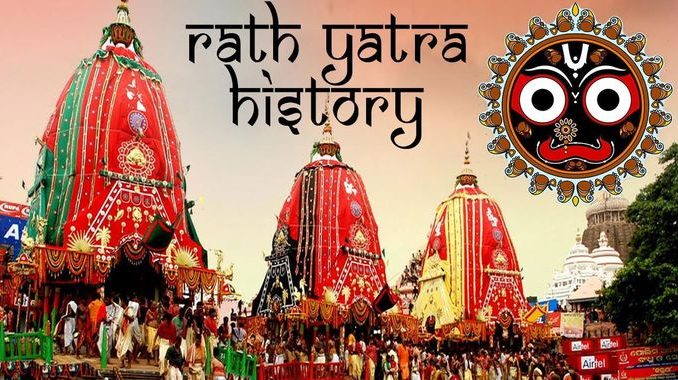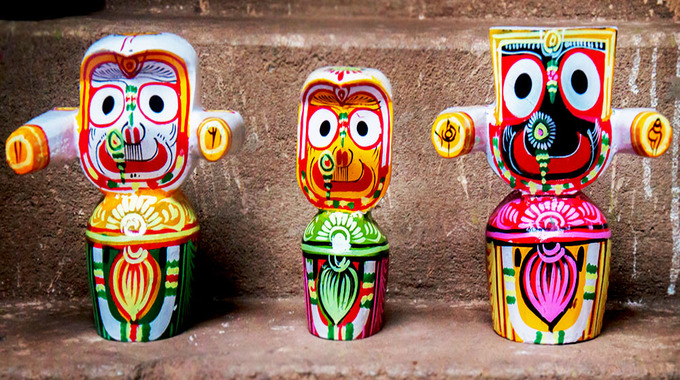
The Jagannath Rath Yatra in Puri is a world-famous religious event and is finally scheduled to take place on 23 June. It is after days of constant discussion and decision by the Supreme Court that this news has been announced, causing a wave of joy among devotees who were eagerly waiting for the deity.
A three-judge bench of the Supreme Court on Monday cleared the conduct of the annual Rath Yatra at Jagannath temple in Odisha. Keeping in mind the sentiments of the devotees, this decision has been attached with several rules and regulations to avoid further health hazards and COVID-19 cases.
According to the Hindu Panchang, this yatra usually begins on the second date during the Shukla Paksha in the month of Ashadh and ends on the Dashami Tithi. It is believed that God himself sees the sufferings and pleasures of humans and removes every obstacle. If you want to get detailed astrological solutions about your life problems from our expert astrologers then you can click here.
Supreme Court On Rath Yatra: Festivities To Be Held With Restrictions
The Supreme Court finally gave the go and allowed to conduct Lord Jagannath’s Rath Yatra in Puri with great devotion. However, the decision has been taken in select circumstances to coordinate the state government, central government and temple committee.
The court demanded no compromise on the health front. It has also been mentioned that the celebration will be done under extreme supervision and will have every right to impose state curfew or stop all the celebrations, when things get out of hand. On the assurance of the State Government, preparations for the Rath Yatra have finally started. It is also stated that all “Pandas” and “Sebayats” who have tested negative for COVID-19 can participate in the ritual or as decided by HH Sri Shankaracharya.
Due to its historical and religious significance, this 10-day event held in Puri in the state of Odisha is famous in the country as well as internationally. Millions of devotees travel from different places to be a part of this festival. It is believed that those who help in pulling the chariot attain salvation.

Also Read: Will Corona Be Liberated After Solar Eclipse On June 21?
Jagannath Rath Yatra Muhurat
| Jagannath Rath Yatra Muhurat | |
| 22 June 2020 | Dwitiya Begins From 12:01:02 |
| 23 June 2020 | Dwitiya Ends At 11:21:05 |
The “Heaven” Of The Mortal World: Jagannath Puri
Four pilgrimage sites or Char Dham (Badrinath, Dwarka, Jagannath Puri and Rameswaram) hold special significance in Hinduism. Jagannath Puri is considered one of these sacred Char Dham sites. According to the Puranas, Jagannath Puri is named as the “heaven” or “Baikuntha” of this mortal world in the form of the earth. The temple located here is more than 800 years old.
Lord Krishna is seen as Jagannath in this temple. His elder brother Balarama and sister goddess Subhadra are also worshiped here. Like Holi, Diwali, Dussehra etc., Rath Yatra of Puri is also celebrated as one of the biggest festivals. Apart from Puri, Rath Yatra is also organized in various cities of India. Jagannath Yatra is an important event in Hinduism, as its description can be found in Skanda Purana, Narada Purana, Padma Purana and Brahma Purana etc.
Attain Virtuous Outcomes Equal To Hundred Yagnas and Moksha
Lord Jagannath is considered to be an incarnation of Shri Krishna. We find information about his glory in many religious texts and Puranas. The Jagannath Rath Yatra consists of a chariot with idols of Lord Krishna, his elder brother Balarama and sister Subhadra, which is performed to see the locals and seek blessings. It is believed that whoever takes part in this chariot journey and attains moksha or salvation to the chariot, and witnessing this journey enables one to get rid of the physical and material attachment to birth and death. Rath Yatra involves lakhs of devotees.
Jagannath Rath Yatra: All Important Details
For organizing the Puri Rath Yatra, three different wooden chariots are made for Shri Krishna, Balarama and Goddess Mahadev. Lord Balarama’s chariot leads the journey, followed by Goddess Subhadra and then Lord Jagannath. The chariots are identified by their color and height, and no iron nail or any other metal is used in their construction. The selection of materials for the chariots begins on the day of Basant Panchami, and construction begins on the Akshaya Tritiya. Lord Jagannath’s chariot consists of sixteen wheels, which are red and yellow in color. Balarama’s chariot has fourteen red and green wheels while Subhadra’s chariot has twelve wheels which are black and blue.
The Rath Yatra begins during the Ashada month from the Dwitiya date of the Dwitiya or Shukla Paksha from the Jagannath Temple. Devotees draw these chariots amidst great pomp and show, drums and conch sound. The Rath Yatra goes from Puri Nagar to Gundicha Temple, where Lord Jagannath, Balarama and Goddess Subhadra rest for seven days. Gundicha Temple, also known as ‘Gundicha Bari’, is considered the home of the Mother Aunt of God. After nine days, Lord Jagannath returns to the Jagannath temple with his siblings.
Also Read: Know The Importance Of Chanting Om Namah Shivay
The “Maha Prasad” Of Jagannath Temple
Jagannath Temple is the only temple in the entire country where Prasad is popularly called as ‘Mahaprasad’. Mahaprasad is called a supreme prasad or prasad, distributed equally to all without any discrimination. The Jagannath temple kitchen is said to be the largest kitchen in the world. The process of cooking in this temple is called an extraordinary scene. For this, seven types of utensils are placed on each other, and everything is cooked only on firewood. In this process, the items in most utensils are cooked first, then followed up to others. The Mahaprasad prepared in this temple never diminishes, but the Mahaprasad also ends with the closing of the temple.
Why is Rath Yatra Conducted?
You must have got detailed information about the chariot, temple, prasad or prasad, yatra etc. But the biggest question is why is this Rath Yatra conducted? Many facts about Lord Jagannath’s Rath Yatra are popular worldwide. It is said that one day, Lord Jagannath’s sister Subhadra expressed a desire to see the city and requested him to visit Dwarka. Accepting his sister’s request, Lord Jagannath asked for a chariot and took his sister to visit the city. Since then, the Jagannath Rath Yatra is performed here every year.
Surprising Facts About Jagannath Temple
- A flag appears on the summit of the Jagannath temple, which always moves in the opposite direction of the wind.
- Surprisingly, the shadow of the main peak of the temple is not visible at any time in the afternoon.
- There are a total of 752 chulhas or earthen stoves in the temple, where Mahaprasad is made. According to the local people living there, the fire burning here never extinguishes.
- No bird sits on the summit of the Jagannath temple. Also, no aircraft etc. can ever be seen flying above the temple.
- If you check the Sudarshan Chakra at the top of the temple from anywhere in Puri, it will always look the same.
